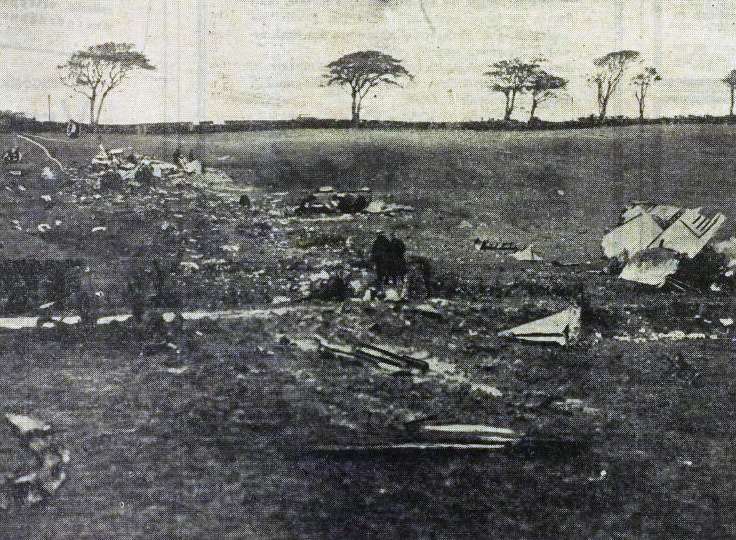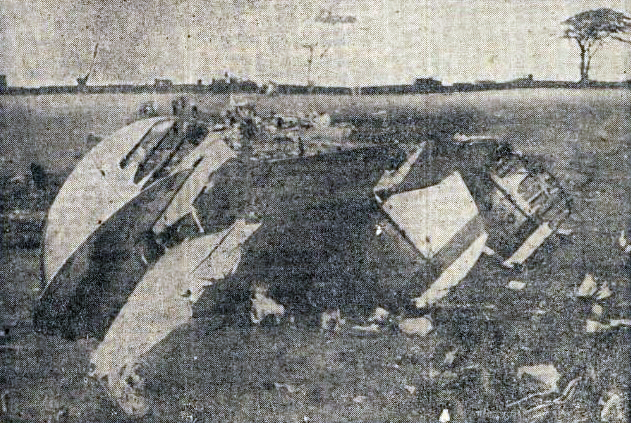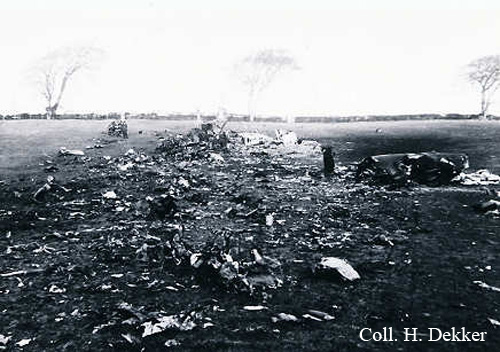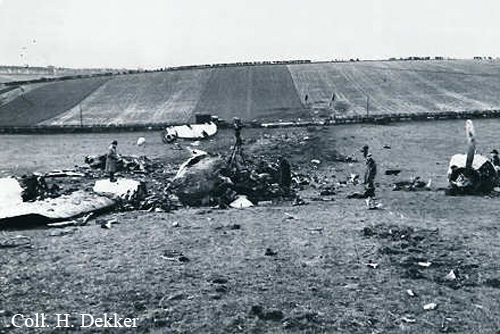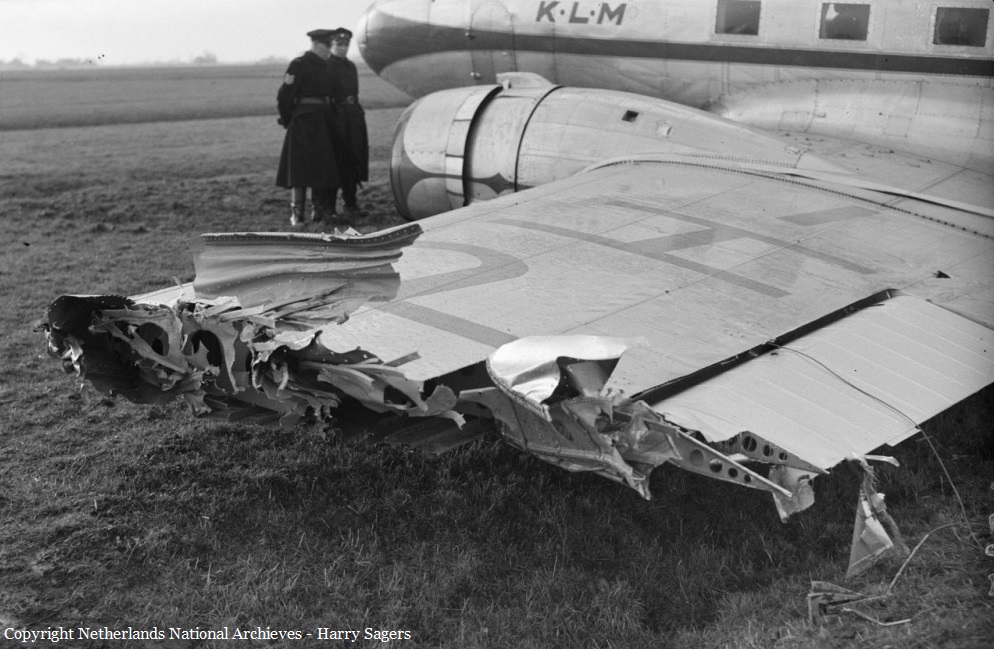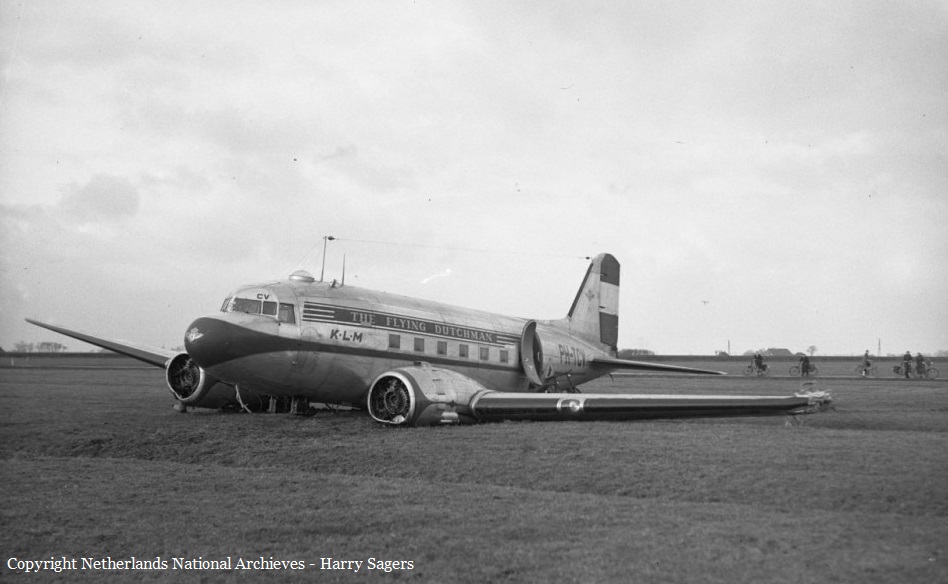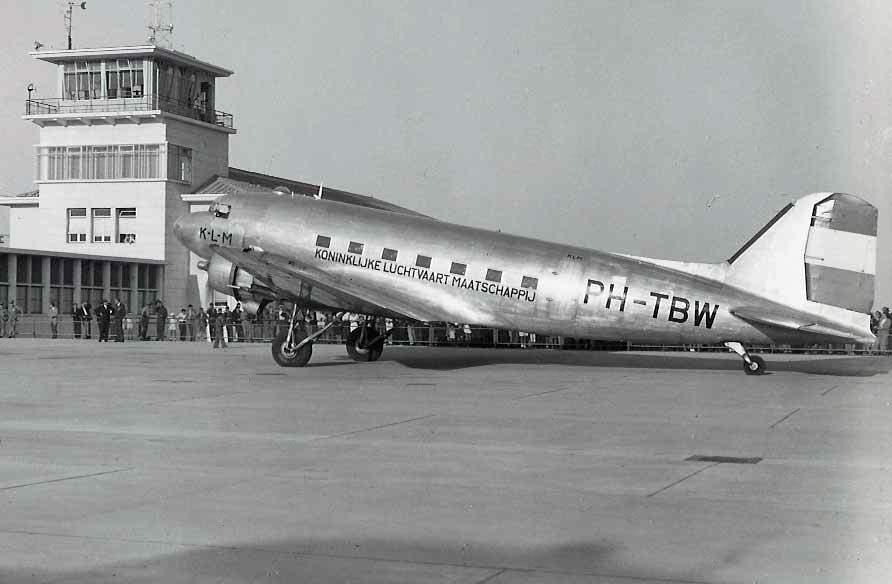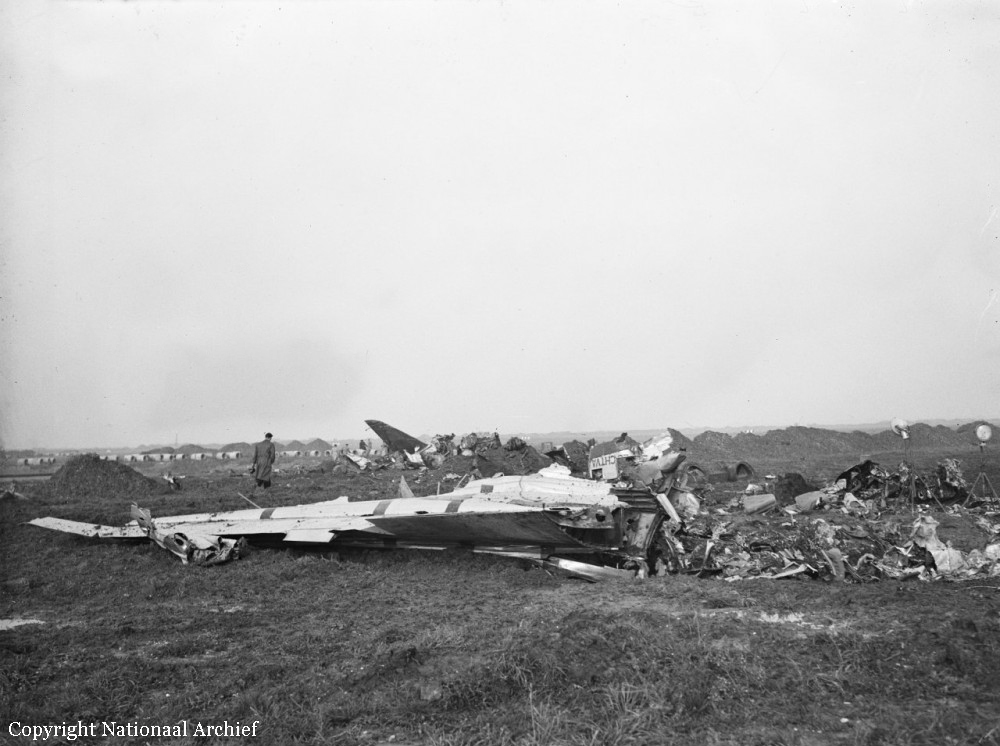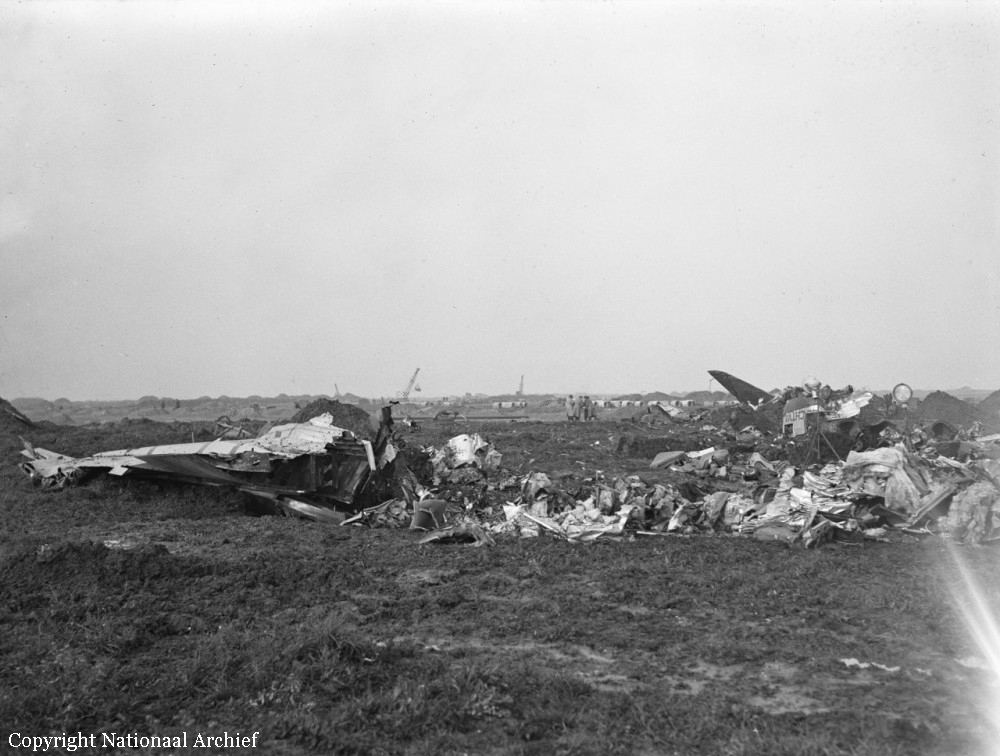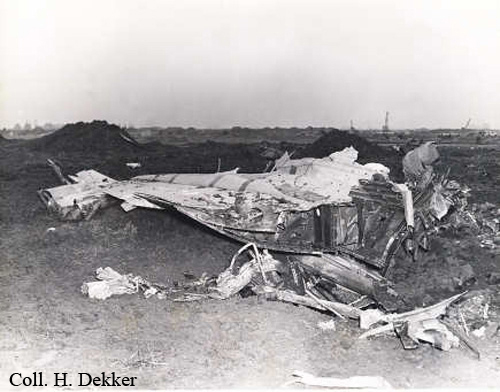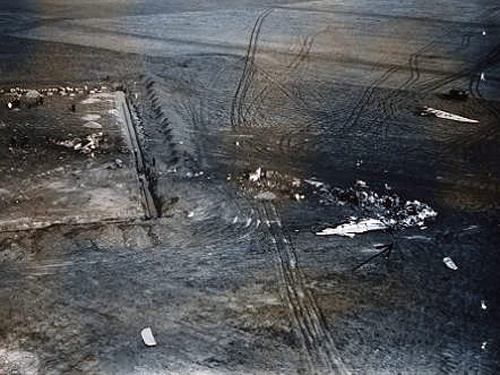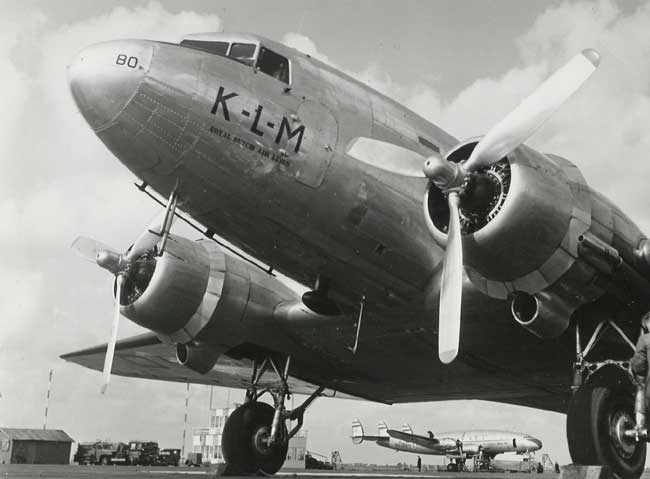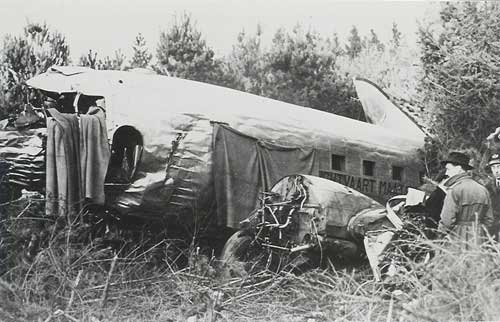Crash of a Lockheed L-049-46-25 Constellation in Prestwick: 40 killed
Date & Time:
Oct 20, 1948 at 2332 LT
Registration:
PH-TEN
Survivors:
No
Schedule:
Amsterdam – Prestwick – Gander – New York
MSN:
2083
YOM:
1947
Crew on board:
10
Crew fatalities:
Pax on board:
30
Pax fatalities:
Other fatalities:
Total fatalities:
40
Circumstances:
The descent to Prestwick Airport was completed by night. On final approach to runway 32, the captain encountered strong winds and decided to start a go around and to follow a holding pattern. He later obtained the permission to start an approach to runway 26. On final, the four engine aircraft christened 'Nijmegen' went into few patches of fog when the pilot said on the frequency: 'we hit something, try to get height'. Shortly later, the aircraft crashed in flames in a field located 5 km short of the runway threshold. A passenger was seriously injured while 39 other occupants were killed. The only survivor died from his injuries few hours later.
Probable cause:
It was determined that:
- When the pilot started his landing maneuver for runway 26 of Prestwick Airport the weather conditions were already below the limits for this maneuver but that from the weather forecasts received this could not be known to him and that this could not be personally judged at the time.
- That, although the landing on runway 26 under the weather conditions, as far as these were known to the pilot, required the greatest caution, the pilot could not be blamed for having commenced that landing procedure.
- That flying too long on the downwind-leg of runway 26 caused the accident.
- That, if no unknown circumstances contributed to the extension of the flight on the downwind-leg of runway 26, the extension was due to the delayed action of the pilot after he lost visual approach.
- That it was not impossible that a stronger wind that the pilot accounted for contributed to the extension of the flight on the downwind-leg of runway 26.
- That the possibility of other circumstances as mentioned under 4 could not be ruled out, but that no data was available which could give cause for the supposition that they contributed to the extension of the flight at a low altitude on the downwind-leg of runway 26.
- When the pilot started his landing maneuver for runway 26 of Prestwick Airport the weather conditions were already below the limits for this maneuver but that from the weather forecasts received this could not be known to him and that this could not be personally judged at the time.
- That, although the landing on runway 26 under the weather conditions, as far as these were known to the pilot, required the greatest caution, the pilot could not be blamed for having commenced that landing procedure.
- That flying too long on the downwind-leg of runway 26 caused the accident.
- That, if no unknown circumstances contributed to the extension of the flight on the downwind-leg of runway 26, the extension was due to the delayed action of the pilot after he lost visual approach.
- That it was not impossible that a stronger wind that the pilot accounted for contributed to the extension of the flight on the downwind-leg of runway 26.
- That the possibility of other circumstances as mentioned under 4 could not be ruled out, but that no data was available which could give cause for the supposition that they contributed to the extension of the flight at a low altitude on the downwind-leg of runway 26.

